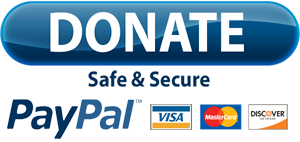Bank Refund Scams
Sharing the Personal Information Will Prove Dangerous:
After obtaining this information from consumers, fraudsters quickly steal money from their bank accounts. At that point, the only option left for the victims is to report the incident to the cybercrime department. Business entities and individuals should be extremely cautious when someone requests their identification or banking details. Even under pressure, they should never share personal information. Anyone who receives such phishing emails should immediately contact the police or cybersecurity authorities. Offenders involved in these scams are subject to strict legal action. If customers receive an SMS or message claiming they are eligible for a bank refund, they should delete it immediately without responding.
Customers may also seek advice from others to ascertain if such letters are being mailed widely. If there is any suspicion, they must immediately get in touch with their bank or financial organization to check if the communication is genuine. Clients should always, however, keep their bank login details, passwords, savings account numbers, and other confidential information absolutely secret. Genuine and reliable banks or financial organizations would never mail or send emails asking for personal details.
Bank refund scams are fraudulent schemes where scammers pose as bank representatives or government officials and contact individuals, claiming that they are eligible for a refund due to an overcharge, error, or some other fabricated reason. These scams aim to trick victims into providing their personal and banking information, which the scammers then use to steal money or commit identity theft. The scam typically unfolds as follows:
1. Initial Contact: The scammer initiates contact, often via phone, email, or even through social media. They may use official-sounding names and claim to represent a reputable financial institution or government agency.
2. False Refund Claim: The scammer informs the target that they are entitled to a refund for a specific reason, such as an overcharge, an erroneous fee, or a tax refund.
3. Request for Information: The victim is asked to provide personal and sensitive information, such as Social Security numbers, bank account details, and sometimes even passwords or PINs.
4. False Verification: The scammer may attempt to appear legitimate by providing fake credentials or official-looking documents.
5. Unauthorized Access: With the obtained information, the scammer gains access to the victim's bank account and initiates unauthorized transactions.
6. Disappearance: After obtaining the desired information or stealing funds, the scammer often disappears, making it difficult for the victim to track them down.
To protect against bank refund scams, individuals should exercise caution when receiving unsolicited communications about refunds. Personal or financial information should never be shared with unknown or unverified sources. Instead, the legitimacy of any such request should be independently verified by contacting the bank or relevant organization directly, using official contact details obtained from their website or other trusted sources.






